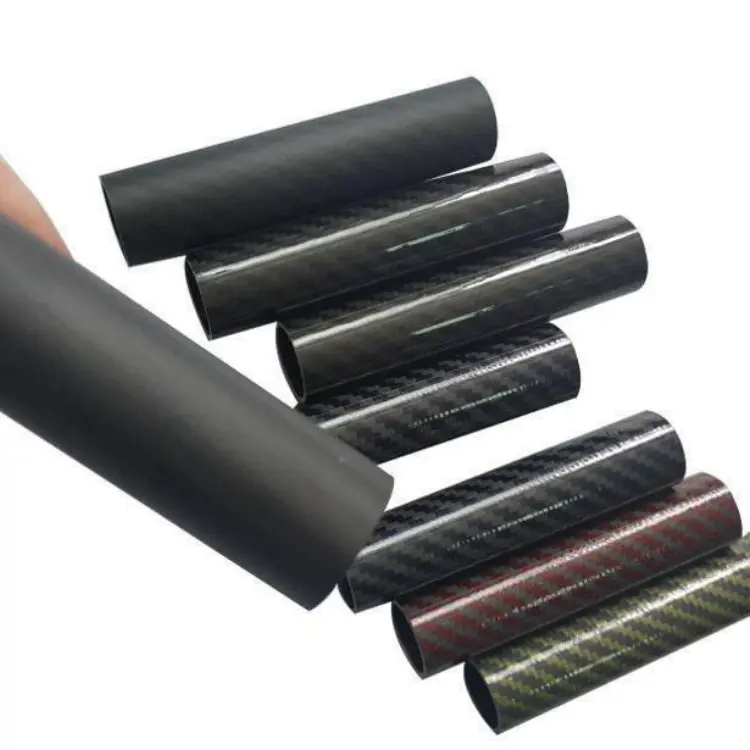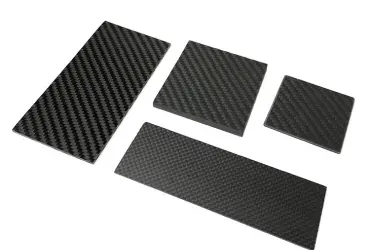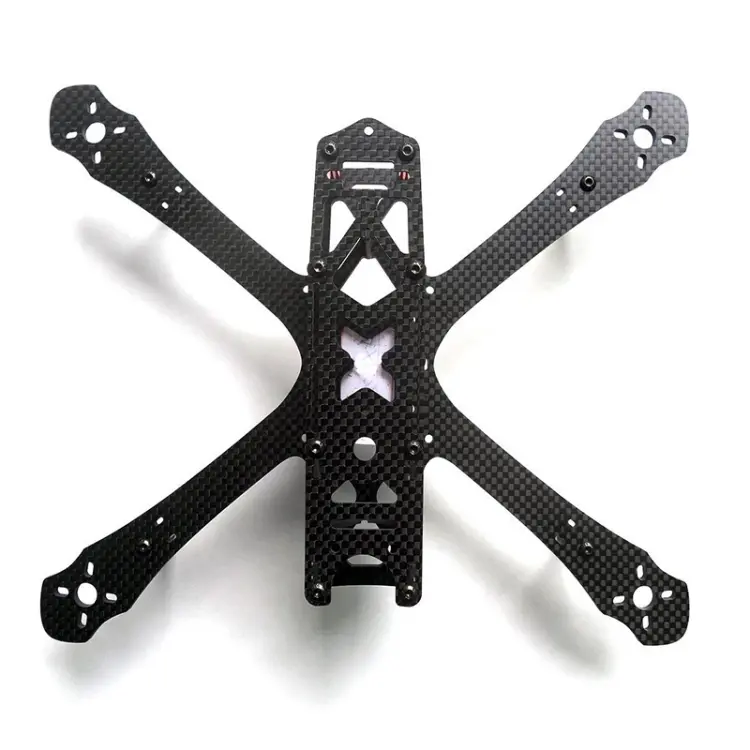1. Introduction
The carbon fiber tube temperature range directly determines suitability for specific operating conditions. The main limit is the resin matrix. Carbon fiber tows can handle temperatures over 2000°C. However, resin systems differ a lot. Finished tubes can work from −200°C to about 3000°C with special matrices. At low temperatures, the composite’s coefficient of thermal expansion (CTE) is nearly zero. At high temperatures, the resin’s mechanical properties decline sharply after reaching its glass transition temperature (Tg). A clear definition of service temperature windows is crucial for aerospace and industrial equipment. [Sources: industry literature synthesis]
2. Temperature test program
2.1 Test specimens and equipment
The team selected three representative carbon-fiber tube systems.
epoxy matrix (T700 carbon fiber)
phenolic matrix (M40J carbon fiber)
bismaleimide (BMI) matrix (generic carbon fiber)
All specimens: Ø60 mm, wall thickness 3 mm, length 630 mm. We used a Shenzhen Sansi WGDY-4350L climatic chamber for environmental conditioning. It has a temperature control of ±0.5°C and a uniformity of ±1.5°C. A universal testing machine was also employed. For cryogenic testing, we added a rig to measure linear thermal expansion. This helps us find the whole-tube CTE.
2.2 Test matrix
The team defined five key temperatures:
−30 °C (low)
20°C (ambient)
70 °C (near Tg)
140°C (above Tg)
180°C (ultra-high for these matrices)
We did quasi-static axial and lateral compression tests at each temperature. We also measured thermal expansion. Researchers equilibrated specimens for 30 minutes before testing. Recorded outputs included peak load, specific energy absorption (SEA), and failure modes. The researchers measured thermal expansion on the intact tube to avoid sampling bias.
3. Key findings (summary)
At −30°C, the epoxy-matrix tube showed an axial peak load of 72.91 kN. This is a 9.7% increase compared to ambient temperatures. Failure mostly occurred due to brittle fiber breakage.
At Tg (about 70°C), lateral compression capacity was best. Above 140°C, resin softening led to a 79.1% drop in peak load. It also changed the failure mode to progressive folding.
The M40J (phenolic) tube had a negative axial CTE. This meant it shrank when heated and expanded when cooled. In contrast, the radial CTE stayed positive. After repeated thermal cycling, the clear CTE values showed a much greater decrease. The results show that the temperature range of carbon fiber tubes depends on the matrix Tg and thermal conditioning.
4. Measured parameters (summary table)
| Parameter | Unit | Epoxy matrix (test cond.) | Phenolic (M40J) (test cond.) | BMI (generic) (test cond.) |
|---|---|---|---|---|
| Long-term continuous service upper limit | °C | 150 (based on 20°C baseline testing) | 260 (500°F equivalent testing) | 280 (sustained-load testing) |
| Short-term withstand upper limit | °C | 180 (30 min soak) | 350 (10 min soak) | 320 (10 min soak) |
| Low-temperature service lower limit | °C | −50 (mechanical retention ≥90%) | −180 (Antarctic simulation) | −60 (industrial low-temp test) |
| Glass transition temperature (Tg) | °C | 85 (DMA) | 150 (DMA) | 205 (DMA) |
| Axial peak load | kN | 72.91 (−30°C, axial compression) | 68.2 (−30°C, axial compression) | 70.5 (−30°C, axial compression) |
| Specific energy absorption (SEA) | kJ/kg | 54.64 (−30°C); 1.96 (180°C) | 51.3 (−30°C); 3.2 (180°C) | 53.1 (−30°C); 4.5 (180°C) |
| Axial linear CTE | 10⁻⁶/°C | 0.8 (−30→20°C, whole-tube) | −0.5 (−30→20°C, whole-tube) | 0.3 (−30→20°C, whole-tube) |
(Sources: Hans Journal, Dragonplate, Jiangsu Boshi Carbon Fiber Technology, Zhishang New Materials)
 5. Typical applications by temperature domain
5. Typical applications by temperature domain
Engineers use extreme cryogenic phenolic M40J tubes in optical housings for space and frames for Antarctic instruments. They work in temperatures from −200 to −50°C. The negative axial CTE keeps dimensions stable, even with large temperature changes. We manage CTEs to the 10⁻⁶/°C level. [Sources: simulation studies; manufacturer reports]
Ambient service (−20 to 60 °C) epoxy-matrix tubes are key.
UAV booms: about 30% lighter.
PCB handling rollers: less rotational inertia, efficiency increased by approximately 20%.
Golf shafts: roughly 50 g lighter.
Designs exploit ~165 GPa elastic modulus and low mass. [Industry data]
Medium to high temperatures (60 to 300°C) are common for BMI and phenolic systems in industrial ovens. BMI tubes can work in continuous environments up to 280°C, like glass handling manipulators. Manufacturers use phenolic tubes for furnace thermocouple mounts at 260°C. Their molded design offers high strength and fatigue resistance at high temperatures. Replacing imported parts can cut system costs by about 40%.
High temperatures (over 300°C) make ceramic-matrix carbon-fibre tubes and C/C composites great for rocket nozzles and semiconductor furnaces. SiC/TaC-coated ceramic-matrix tubes hold up well in 1800°C air, keeping about 91% of their strength. In contrast, carbon–carbon tubes expand thermally at 450°C, about 1/18 the rate of fused silica. [Advanced materials sources]
6. Frequently asked engineering questions
What determines temperature tolerance?
The resin matrix is key.
Epoxy lasts up to 150 °C.
Phenolic works up to about 260 °C.
Ceramic matrices go beyond 2000 °C.
Fibers can handle over 2000°C, but they need a matrix to form strong parts.
Difference between long-term and short-term temperature limits?
For epoxy:
Long-term service is up to 150 °C, with performance degradation of ≤5% over 1,000 hours.
Short-term exposure for 30 minutes can handle 180°C. But, if it stays over 1 hour, it will cause irreversible resin softening.
Does low temperature embrittle carbon-fibre tubes? Generally, no. Epoxy-based tubes hit a higher peak load at -30°C. Phenolic matrices get a bit more brittle at -180°C. Composites also do better in the cold than most metals.
How to measure real-world thermal expansion? Use whole-tube direct measurement. Cutting samples changes the stress state and can cause big errors. Preconditioning with three thermal cycles (cold-hot) reduces leftover stresses before the final measurement.
Can we repair thermally degraded tubes? Resin softening can cause lasting damage. But high-temperature coatings like Al₂O₃ can improve service life. Inspect and replace coatings every ~500 service hours. This helps prevent delamination failures.
7. Conclusions and engineering recommendations
Conclusions: The nominal temperature range for carbon fiber tubes is from −200 to about 3000 °C. However, practical limits depend on the resin system used.
Conventional resins, such as epoxy and phenolic, perform well from about −50 to 280°C. Their performance remains stable or even improves below the glass transition temperature (Tg). Above Tg, strength can drop by about 96%. Also, failure shifts from brittle fracture to progressive folding.
Thermal expansion behavior is strongly dependent on ply architecture and fiber orientation.
Engineering recommendations
Match the matrix to the continuous service temperature.
For ambient systems, choose epoxy. It’s cost-effective.
For 200–300 °C industrial duty, consider BMI/Bismaleimide.
For extreme cryogenic space hardware, select phenolic M40J variants.
High-temperature protection strategy. For mid to high temperatures, use a high-temperature matrix. A polyimide layer rated for about 300°C works well. Also, add a 50 μm SiC coating. This boosts short-term resistance to around 400°C.
Preconditioning and monitoring. New tubes should be thermally cycled (−30°C / 180°C) three times to relax residual stresses. Inspect SEA and coating integrity every 200 service hours during high-temperature use. Replace components if SEA degrades by more than 30%.

 5. Typical applications by temperature domain
5. Typical applications by temperature domain


